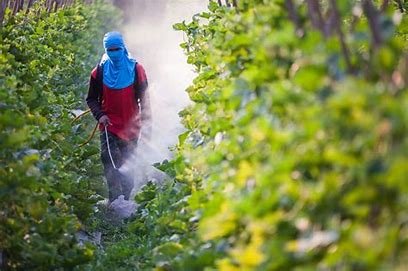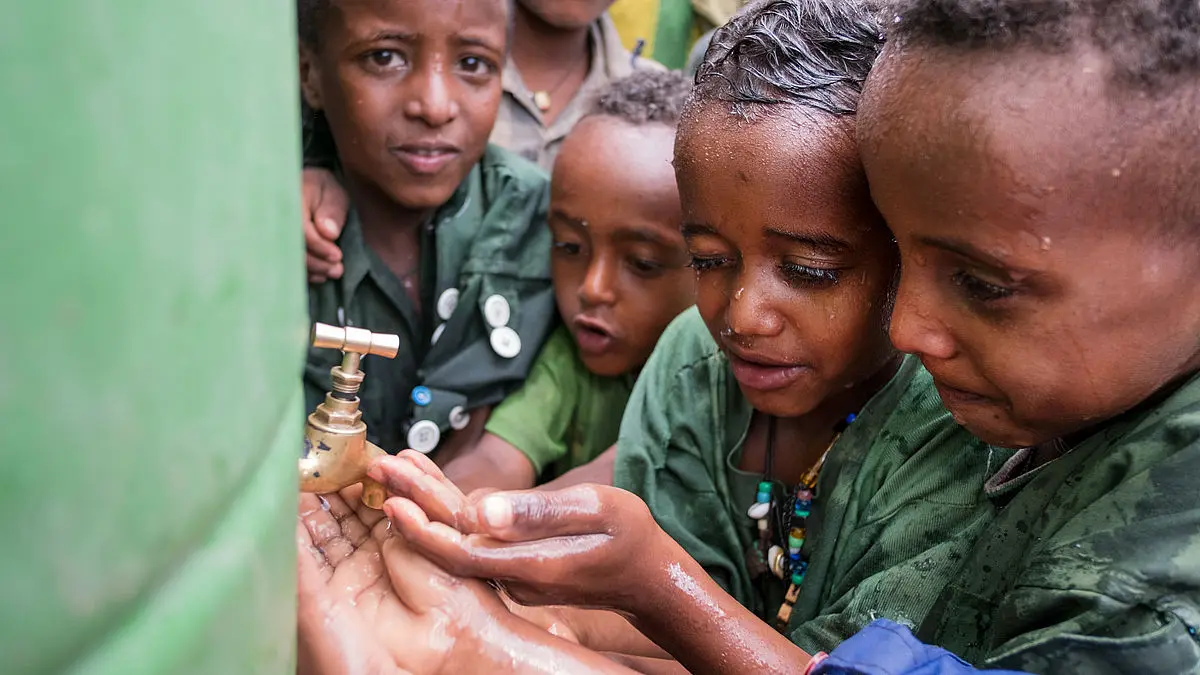Central America
Pesticides in Costa Rica
By: Cinthya Xivir Perez
Agriculture in Costa Rica is very diverse, a few of their cash crops include: coffee, bananas, and cattle for beef and dairy. But how is it that Costa Rica maintains their crops healthy? The answer is: pesticides. While the extensive use of chemicals boosts yields and ensures fruit is perfect, the negative impacts of this production approach are heavily felt by local communities and the environment.
Costa Rica has one of the highest rates of pesticide use per capita of anywhere in the world. A recent study published in Environment International examined pesticide use in Costa Rica and found that 79 distinct pesticide molecules are permitted for use on banana plantations there. These pesticides are found in 818 different products, including 43 fungicides, 12 herbicides for weed management, six insecticides applied directly to the plants, seven insecticides placed in blue bags around bananas, and eight nematicides. Many of these products are banned in the European Union and the United States. These pesticides can cause birth defects, and negative impacts on wildlife. In the study published in Environment International, it is stated that, near banana plantations, there is a noticeable drop in the variety of small aquatic creatures and lower scores on biodiversity measures compared to areas upstream. Similarly, pesticide levels in the blood of caimans decrease as you move further from the plantations, which also improves their overall health and condition.

In an interview with Sierra, Valdivieso Miller, who has spent 33 years handling chemical bags on Costa Rican banana farms, shared his experience. Described as a stout man with strong hands shaped by decades of fieldwork and skin that reflects his Indigenous roots, Miller explained how toxic substances often get into his eyes while bagging bananas, especially after the plants are sprayed by planes in the morning. These chemicals can also reach the surrounding community and affect them. The Guardian interviewed Lidieth Gomez who is one of 451 women involved in a study by the Regional Institute for Studies of Toxic Substances (IRET) at the National University of Costa Rica. She reports that “Whenever the planes fly over, my eyes start burning and my arms itch.” The research has found pesticides, including chlorothalonil and mancozeb—both fungicides linked to potential cancer risks—along with chlorpyrifos, which is neurotoxic to children, and neonicotinoids, a class of insecticides that may affect neurological development, in the blood of women and children like Gomez and her 14-year-old son, Daniel.
Costa Rica is known for its cash crops, including coffee, rice, and sugar. When you choose a pineapple at the supermarket, there's a good chance it's from Costa Rica, which supplies 86% of the pineapples sold in the United States and is the world's leading exporter of the fruit. However, the extensive pesticide pollution in this small Central American nation reveals an inconsistency with its green image. Costa Rica has been a trailblazer when it comes to conservation, with a quarter of its land designated as national parks and reserves, and 98% of its energy coming from renewable sources, the only place they are lacking in is their pesticide policy.
East Africa
Neglected Tropical Diseases
By: Lorena Magana
Neglected Tropical Disease (NTDs) are communicable diseases that affect populations in tropical and subtropical regions. This caninclude diseases such as leishmaniasis (transmitted diseases affecting skin and organs) , trachoma (eye infection) , onchocerciasis (spread by black flies often causing blindness) , soil-transmitted helminths (parasitic worms that infect humans through contaminated soil). East Africa, due to its large rural population, poverty, and under-resourced health systems, is extremely affected by NTDs. contributing to morbidity. Addressing NTDs affecting the mass population in East Africa is critical in improving public health.
In East Africa, the rise of NTDs is influenced by environmental and socioeconomic factors, including poor sanitation, poor healthcare access, and limited education on health. For example, schistosomiasis and soil-transmitted helminths thrive in a place where there is poor sanitation and lack of clean water. These diseases affect communities where water may be contaminated. The region's climate also makes it a suitable environment for the vectors, such as black flies, that will transmit disease like onchocerciasis.
Despite the widespread rise of NTDs, they have received little attention from the media, health institutions, and governments. The term neglected highlights how despite the fact that this is affecting over a billion people, most of whom live in East Africa, still aren't getting the help and attention they need. In East Africa, the combination of stigma, poverty, and lack of political will makes NTDs extremely difficult to deal with. Efforts to address NTDs in East Africa have gained some attention like a mass drug administration campaign to reduce NTDs, but these interventions are often affected by logistical challenges. Moreover, MDA programs are mostly temporary due to underlying causes such as poor sanitation and lack of clean water remaining underdressed.
In conclusion, NTDs have impacted the population of east africa and there needs to be more efforts to combat the issues these people are facing. While some programs have tried to help, there are still many other factors that need to be focused on such as poor sanitation in order to fix NTDs. By fixing these problems it will not only improve health outcomes but will positively contribute to economic development.
East Europe
Democratic Hungary: Rise of Authoritarianism in Europe
By: Chris Gutierrez

Over the last few years, Hungary has become the focus of discussions on the rise of authoritarianism in Europe. Prime Minister Viktor Orbán, who has been in power for the last 14 years, has systematically dismantled the key democratic institutions within the nation. His government in power has tightened up the independence of the judiciary, restricted press freedom, and passed laws that have weakened checks and balances that are essential for a proper democracy.
Orbán’s political party, Fidesz, has also altered electoral laws to maintain their power, giving them an unfair advantage during elections. Furthermore, the government has increasingly used nationalist rhetoric, targeting migrants and marginalized communities, fueling the already ongoing divide in the nation. Hungary is a pivotal member of the European Union and Hungary’s shift toward authoritarianism may alter the democratic values even within the continent's political core. This case may serve as a prime example of how fragile democracy can be, highlighting the importance of safeguarding it from internal threats.

As Hungary movers further from the democratic norms, the European Union faces the challenge of balancing respect for national sovereignty with the defense of the continent democratic principles. How the European Union responds to this occurring issue in the continent may set a precedent for dealing with other emerging authoritarian regimes within the region.
Middle East
The Illusion of Safe Speaking
By: Samya Sehwail
When explosions are detonated, they are often from bombs, rockets, or other military-grade weapons targeted toward a war zone. They are rarely pagers inside of a grocery store. Yet, that was exactly what happened on Tuesday, September 17th, in the capital city of Lebanon, Beirut. Hundreds of pagers went off in hospitals, streets, markets, and homes all over Lebanon. The pagers were from a Taiwanese company and were used by Hezbollah members - a military and terrorist organization that also provides civic services to parts of Lebanon. In this modern age, pagers are obviously outdated, so why would a high-grade military group use those devices? As technology advances, so do infiltration and espionage, fields in which Israel excels. Hezbollah specifically used pagers to sidestep tracking and phone tapping by Israel and were thought to be a safer and more secure option. Yet, that illusion was shattered just as quickly as the devices.
Reportedly, the Hezbollah members, who were the targets of the attack, received a message from “Hezbollah leadership,” followed by several seconds of beeping. The unusual occurrence caused curiosity among those holding the pagers, who would look directly at the devices when they exploded. Hundreds lost their eyes or suffered amputations to their fingers and hands. Several Hezbollah members, as expected, were affected, but far too many civilians were rushed to hospitals and left permanently maimed by the incident. While the attack was highly organized by Israel—though they have yet to take public responsibility, they confirmed it to a U.S. official—they could not be sure who was holding the pager at the time. It could have been a stranger who picked up a dropped pager, a mother handing it to her son before he left for work, or a daughter running to give it to her father as it started beeping. The attack was indiscriminate, or, as human rights experts from the United Nations put it: a violation of international law. Yet another crime at Israel’s hands, this time against the Lebanese people.
Ravaged by the blasts and mourning their losses, the Lebanese people did not expect another horror to strike. On Wednesday, walkie-talkies became makeshift bombs in a second attack. Mainly in the suburbs of Beirut, several hundred more were injured as Icom Inc. walkie-talkies, which hadn't been manufactured for a decade, erupted. A notable case occurred during a funeral for the prior day's victims, when several more joined their ranks. By the end of the week, 37 were dead, including two children, and over 3,000 were injured. One high official, the Iranian ambassador to Lebanon, lost his eye in the explosion.
But how was this even possible? The two strikes used different infiltration strategies. The pagers were supposedly manufactured by a Taiwanese company called Gold Apollo and packaged in Hungary by a company that was actually an Israeli front. Mossad, the Israeli intelligence agency, created the front company to add the technology needed to cause the pagers to explode and ensure they reached Hezbollah hands. In the case of the walkie-talkies, it was a matter of supply chain compromise. Israel intervened at some point to add small detonators into the devices and then simply waited for the planned attack.
It will likely take some time for Hezbollah to recover, as they have suffered further airstrikes, and to respond to Israel's assault. However, it may not take long for Israel to push forward with these new tactics, as Israel's own Defense Minister, Yoav Gallant, called this “a new phase of the war,” meaning Israel will be shifting its focus from Hamas in Gaza to Hezbollah in Lebanon.


